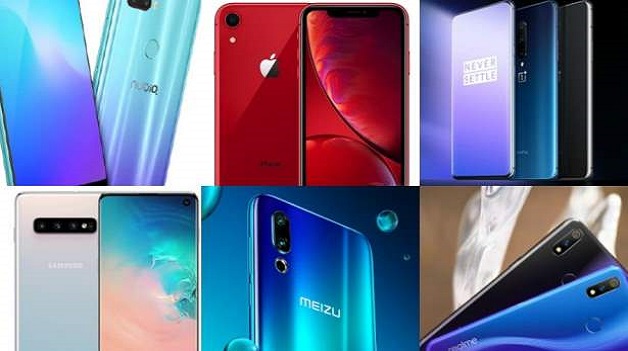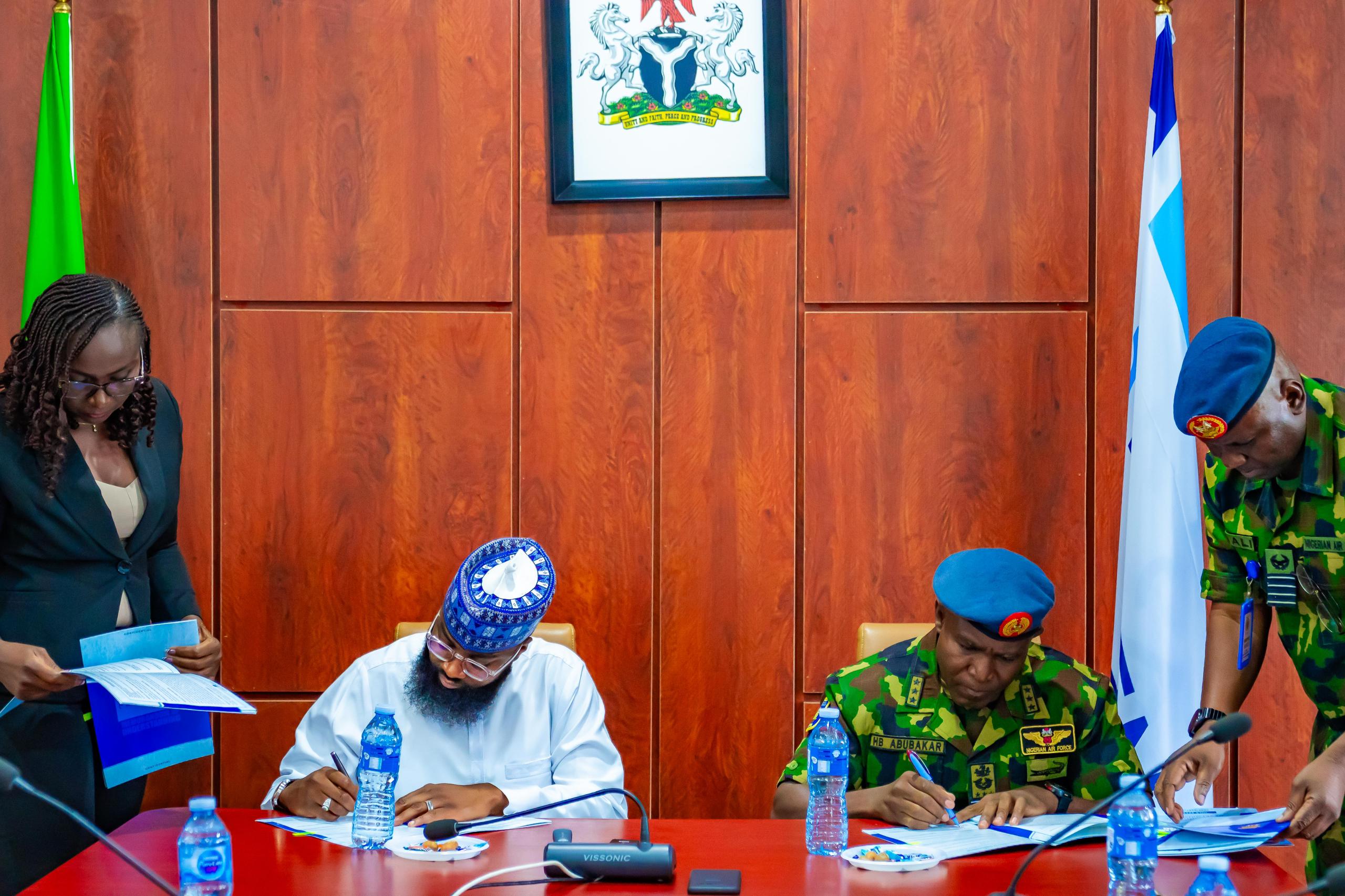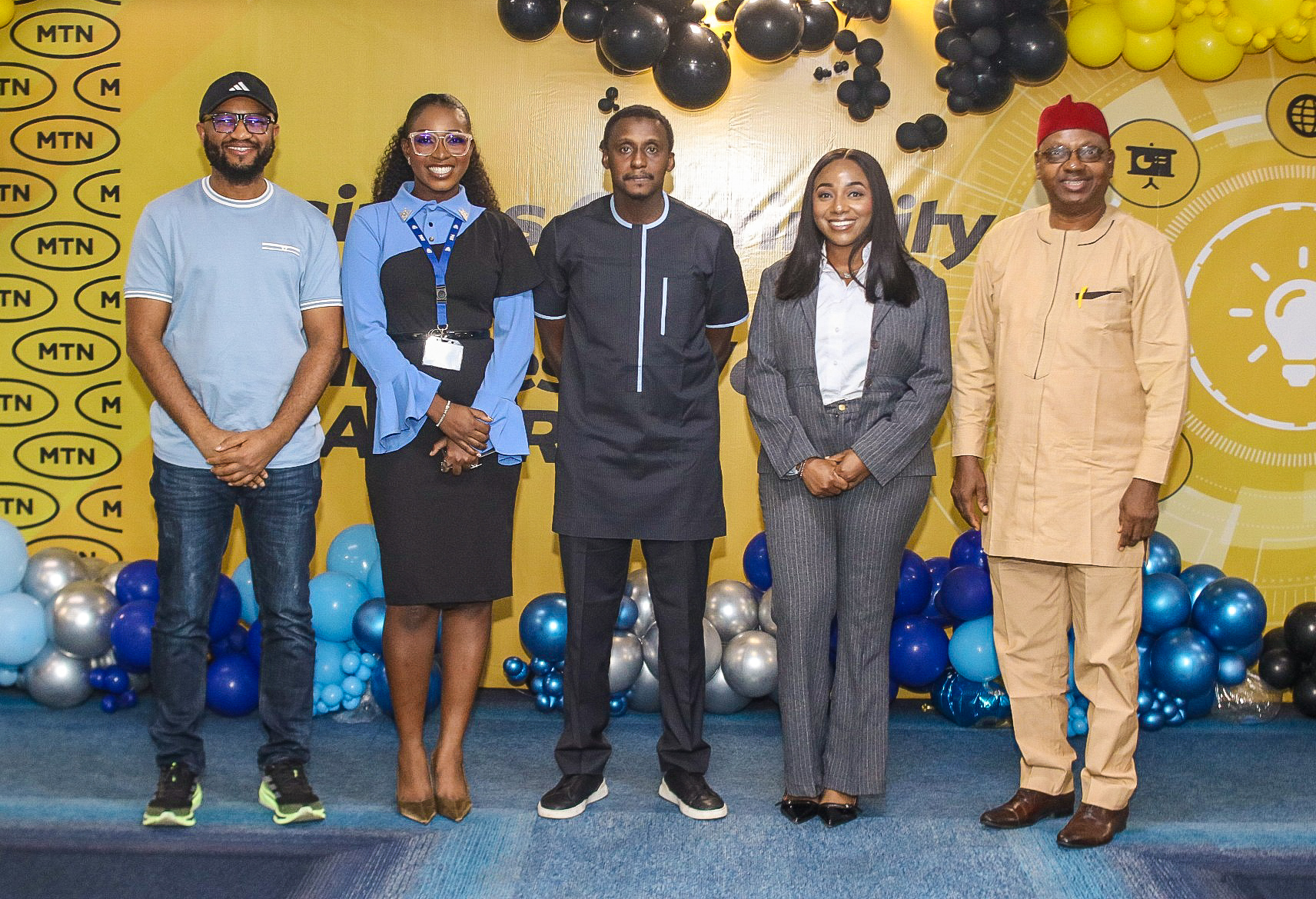Telecom
GSMA Report Reveals Smartphone Owners Now the Global Majority

Over half (54%) of the global population – some 4.3 billion people – now owns a smartphone, according to the GSMA’s annual State of Mobile Internet Connectivity Report 2023 (SOMIC) published this week.

Smartphone owners are much more likely to be aware of, and adopt, mobile internet services, as well as use it more frequently and for a wider variety of tasks.
For example, of the 4.6 billion people now using mobile internet, almost 4 billion do so using a smartphone, representing just under half (49%) of the world’s population. Meanwhile, 600 million people – 8% of the global population – are accessing the internet using a feature phone.
For the first time, the SOMIC 2023 report, breaks down mobile internet connections by device type, revealing significant regional variations. The global expansion of 4G and 5G networks has paved the way for over two-thirds (69%) of smartphone owners accessing mobile broadband to be doing so on a 4G-enabled device, while 17% are doing so on a 5G-enabled device – driven largely by mature markets such as North America and East Asia & Pacific.
Meanwhile, 69% of smartphones used to access mobile internet in Sub-Saharan Africa, and 33% in the Middle East and North Africa, are still only 3G-capable, meaning 2G and 3G networks remain an important source of coverage for millions of users in low- and middle-income countries (LMICs).
The GSMA’s sixth annual SOMIC report, published ahead of MWC Kigali 2023, analyses the latest trends in global connectivity since 2015, provides insights into mobile internet usage and barriers to adoption in LMICs, and outlines the key challenges that must be addressed to ensure everyone can connect to the internet.
Spotlight on the usage gap and the digital divide
While more people are using mobile internet than ever before – 57% of the global population – 3.4 billion people remain unconnected. The majority of those who are not using mobile internet live in areas covered by a mobile broadband network – the usage gap.
This usage gap has fallen slightly from 40% of the global population in 2021 to 38% in 2022 – representing 3 billion people – but remains substantial. By comparison only 5% of those not using mobile internet live in areas without mobile broadband coverage – the coverage gap.
Regional discrepancies and a digital divide persist; for example, Sub-Saharan Africa and South Asia represent the regions with the least connected populations and where the usage gaps are 59% and 52% respectively.
In LMICs, adults in rural areas are still 29% less likely to use mobile internet than those in urban areas, while women are 19% less likely to use mobile internet than men.
In addition, the report reveals that two-thirds of the individuals who live within areas covered by a mobile broadband network but who are not using mobile internet do not own a mobile phone, highlighting the importance of tackling issues such as handset affordability.
However, even where people do own smartphones, many are still unable to use them due to barriers such as digital skills and literacy, safety and security concerns, accessibility of enablers or services, and the availability of relevant content in local languages.
The remaining third of the usage gap, representing 950 million people, consists of users who own or have access to a smartphone (350 million) or basic or feature phone (600 million), but are only using basic services like voice or SMS. Smartphone owners should, in theory, face fewer barriers to accessing the internet, given they already have a device, is often a primary barrier to using the internet.
Other key findings
- While 200 million people began using mobile internet in 2022, the growth rate at which people are adopting it has slowed in the last year, falling from 300 million in 2021 and 2020.
- Only 25% of the population in the world’s least developed countries use mobile internet, compared to 52% across LMICs and 85% across high-income countries.
- Mobile broadband coverage has remained relatively unchanged, with 95% of the global population living within the footprint of a mobile broadband network.
- 5% of the world’s population is still not covered by mobile broadband, representing almost 400 million people.
- Connectivity varies significantly between and within regions and countries, with 95% of the unconnected living in LMICs.
- For the first time, all regions now have average download speeds of at least 10Mbps, while the global average download speed increased from 27Mbps to 34Mbps.
Breaking barriers to ensure no one is left unconnected
Mobile internet connectivity delivers significant social and economic benefits to both individuals and society, helping to improve wellbeing, increase household consumption and positively impact GDP.
In recent years, efforts have been made to break down the barriers to the usage gap, while striving for digital inclusion, recognising its transformative potential for societies. While there have been notable achievements and mobile internet adoption continues to grow, the SOMIC report shows progress is slowing and that increased action is required to ensure everybody can access mobile internet.
To this end, the GSMA is calling for a greater collaborative effort from all stakeholders, including government, policymakers and the mobile ecosystem, to break the barriers to the digital divide, provide coverage for those living in areas without mobile broadband and overcome barriers to usage. Actions must be informed by an understanding of the usage gap, the needs of individuals not yet using mobile internet, the barriers they face, and the opportunities to address them.
Mats Granryd, Director General of the GSMA, said: “Mobile is the primary – and, in most cases, only – way that most people in low- and middle-income countries access the internet. The fact that the growth rate at which people are adopting mobile internet has slowed is worrying.
“Lack of connectivity will deprive billions of people of access to vital services and revenue-generating opportunities – likely impacting poorer, less educated, rural and female users disproportionately.
“As the ongoing cost-of-living crisis and rise in climate-related emergencies affects these groups further, there is an urgent need to accelerate digital inclusion and break down the barriers to stop the digital divide from widening further.”
Telecom
NASENI, Nigerian Air Force Renew Strategic Partnership to Drive Indigenous Defense Technologies

National Agency for Science and Engineering Infrastructure (NASENI) and the Nigerian Air Force (NAF) have renewed their Memorandum of Understanding (MoU) to deepen collaboration on indigenous technology development, particularly in defense, aerospace, and infrastructure.

The event, which took place at NASENI Headquarters in Idu Industrial Layout, Abuja on 25th July 2025, was marked by a high-level visit led by the Chief of Air staff, Air Marshal Hasan Bala Abubakar alongside senior officers from the Nigerian Airforce. The team was received by the Executive Vice Chairman/CEO of NASENI, Mr. Khalil Suleiman Halilu, and his management team.
In his keynote remarks, the Air Marshal commended NASENI for its transformative work under Mr. Halilu’s leadership, particularly in reverse engineering, local manufacturing of engineering components, and consistent support to the Nigerian Air Force.
He specifically acknowledged NASENI’s contribution to the development of the C5 Rocket Project, highlighting the agency’s role in producing the rocket bodies and structural components, and in conducting precision material analysis.
He also applauded the establishment of the NASENI Northwest Technology Innovation Hub located at the Air Force Institute of Technology in Kaduna, describing it as a landmark project made possible through land support by NAF.
The Air Marshal noted that, Airforce is seeking greater inclusion in the governance and execution of the hub, given its role as host and technical contributor, also proposing that NASENI formally co-own the C5 Rocket Project, while urging the agency to continue leading the production of rocket body structures while exploring cost optimizations.
Furthermore, he invited NASENI to enroll its young researchers in newly developed R&D training modules at its Research and Development Institute. The request extends to a new area of partnership — capacity building in Computer Numerical Control (CNC) machining for Air Force technical personnel at NASENI’s Centre of Excellence.
Responding, NASENI EVC/CEO Mr. Khalil Suleman Halilu reaffirmed the agency’s commitment to the long-standing collaboration with the Air Force, describing it as both professional and personal.
“Our partnership with the Nigerian Air Force is one of our smoothest and most productive,” he said. “We’ve achieved so much together — from reverse-engineering projects to shared innovation hubs — and we are just getting started.”
Mr. Halilu showcased NASENI’s progress in Unmanned Aerial Vehicle (UAV) development, drone pilot training, asset recovery programs, and its world-class CNC machining infrastructure, inviting the Air Force to take advantage of all available resources and facilities.
He emphasized NASENI’s culture of private sector collaboration as a model for cost-effective implementation while maintaining inclusive access for public institutions such as the Air Force.
Highlighting the signing of the new MoU, Mr. Halilu said the updated agreement is designed to be more structured, result-driven, and aligned with President Bola Ahmed Tinubu’s Renewed Hope Agenda. It focuses on joint R&D, local manufacturing of aerospace and defense components, human capital development, and knowledge exchange.
“This partnership goes beyond paperwork,” Mr. Halilu noted. “It’s about building the future of Nigeria’s defense and innovation ecosystem together.”
The formal signing of the renewed MoU marked a new chapter in the strategic relationship between both institutions, setting the stage for the activation of joint action plans on the C5 Rocket Project, CNC training, defense manufacturing, and other innovation-driven initiatives.
Telecom
How Zabira is Empowering the Next Generation of Entrepreneurs

Financial independence is no longer a distant dream but a daily reality, especially for young entrepreneurs cashing out weekly through innovative platforms like Zabira.

From trading gift cards to paying bills with crypto-converted naira, Zabira is proving to be more than just a fintech app; it’s a complete digital marketplace designed to fuel the ambitions of the next generation of hustlers.
With users reportedly earning up to ₦150,000 weekly from ongoing campaigns, Zabira has become a go-to platform for side income and full-time digital entrepreneurship.
Its frequent cashback campaigns reward both new and existing users, allowing them to earn 2% cashback on their first crypto trade and 3% on their first gift card trade, a simple but powerful incentive that reduces entry barriers for young people stepping into digital finance.
But Zabira isn’t just about trading; it’s about everyday life. In a move to deepen its utility and promote seamless living, the platform has expanded its bill payment business unit. Users can now pay for airtime, data, electricity (PHCN), TV subscriptions, and even fund wallets for platforms like Bet9ja, all within the Zabira App.
Zabira allows users to make utility and other payments directly using crypto. For added flexibility, users can also instantly convert their crypto to naira, removing any limitations and ensuring seamless transactions without bank delays or downtime.
This subtle integration of crypto into daily transactions is a major leap forward in digital financial inclusion. It not only helps normalise the use of digital assets but also provides practical avenues for users to derive real-world value from their crypto holdings.
Zabira also understands the frustrations of online subscriptions, especially when traditional bank cards fail. Through its robust gift card marketplace, users can buy and use cards for platforms like Netflix, Spotify, Google Play, Apple, Amazon, and more.
These cards offer a reliable alternative for accessing services that are increasingly essential for both work and leisure and are especially helpful for digital creatives, remote workers, and students.
Beyond utility, the platform keeps the entrepreneurial spirit alive with bonus campaigns on first-time gift card trades, creating more reasons for users to engage and earn. With every trade, Zabira positions itself not just as a service provider but as a digital enabler supporting users on their financial journey.
In a country where access to financial tools can often feel like a privilege, Zabira is leveling the playing field. Whether you’re a student looking to subscribe to an online course, a freelancer paying for tools, or a small business owner funding your daily operations, Zabira is building the infrastructure that turns these goals into everyday wins.
To get started using Zabira, users can download the app on Android and iOS devices.
Telecom
MTN Media Innovation Programme Fellows Gain Insight into Nigeria’s Connectivity Backbone

Fellows of the MTN Media Innovation Programme (MIP) embarked on an intensive industry tour recently, gaining firsthand experience of MTN Nigeria’s infrastructure and learning how technology is shaping the future of connectivity and storytelling.

L-R: Dr Chike Mgbeadichie, Programs Director, Professional Education, School of Media and Communications, Pan-Atlantic University; Blessings Mosugu, Vice President, MTN Media Innovation Programme Cohort 4; Yahaya Ibrahim, Chief Technical Officer, MTN Nigeria; Rebecca Edun, Social Director, MTN MIP Cohort 4 and Isaac Ogugua-Ezechukwu, Programs Administrator, Professional Education, School of Media and Communications, Pan-Atlantic University, during the July session of the MTN Media Innovation Program held at the MTN Plaza, Ikoyi, recently.
The day began with a visit to the MTN Cable Landing Station, where the Fellows explored the facility that serves as a gateway for international data traffic. The tour provided insights into the network that powers Nigeria’s digital ecosystem.
At the MTN Switch in Aromire, the group observed key operations ensuring seamless connectivity across the country. They were guided through the processes that keep millions of Nigerians connected daily.
Later at MTN’s Head Office in Falomo, the Fellows engaged in two sessions with the company’s executives.
Onyinye Ikenna-Emeka, Chief Marketing Officer, discussed the role of 5G and IoT in driving innovation and storytelling in the media. “5G is not just about speed; it’s an enabler of experiences,” she said. “With ultra-low latency and massive device connectivity, we can deliver high-definition content production, virtual reality experiences and cloud-native workflows that redefine how journalists create and audiences consume media.”
The CMO also noted that MTN’s leadership in 5G since 2022 has opened doors for industries such as healthcare, education, and entertainment to innovate.
In a session on network innovation and digital transformation, MTN’s Chief Technical Officer, Yahaya Ibrahim, shared how the company is leveraging artificial intelligence for demand planning and network optimisation. “AI allows us to predict faults, automate maintenance and plan smarter for Nigeria’s unique needs,” he said.
He also highlighted the technical challenges of maintaining network stability. “From seamless handovers between base stations to combating fibre cuts and vandalism, we work around the clock because connectivity is critical to the economy and to people’s lives,” Ibrahim said.
The day provided Fellows with a comprehensive understanding of MTN’s infrastructure and the technologies shaping Nigeria’s digital future, reinforcing the programme’s goal of empowering media professionals to tell richer, more informed stories about the industry.

 General News3 days ago
General News3 days agoFG Plans N50m STEEM Grant to Support Student Innovation in August

 E-Business3 days ago
E-Business3 days agoTranscorp Hotels Delivers Stellar H1 Results, Declares Over ₦1Bn Dividend

 E-Financial3 days ago
E-Financial3 days agoCardoso, CBN Boss Risks Arrest over Alleged N5.2 Trillion Unremitted Funds

 E-Financial3 days ago
E-Financial3 days agoNIBBS: Banks Close 29.4m Accounts, Dormant Accounts Hit 33.39m

 Telecom3 days ago
Telecom3 days agoMTN Media Innovation Programme Fellows Gain Insight into Nigeria’s Connectivity Backbone

 General News3 days ago
General News3 days agoExperts Champion Sustainability at Lagos Green Economy Forum

 Broadcasting3 days ago
Broadcasting3 days agoNDPC Hides MultiChoice Privacy Violation Details Despite FOI Request- FIJ

 Telecom3 days ago
Telecom3 days agoDriving Digital Inclusion: Anambra’s Mobile Tech Hub Brings Free WiFi to the People



























